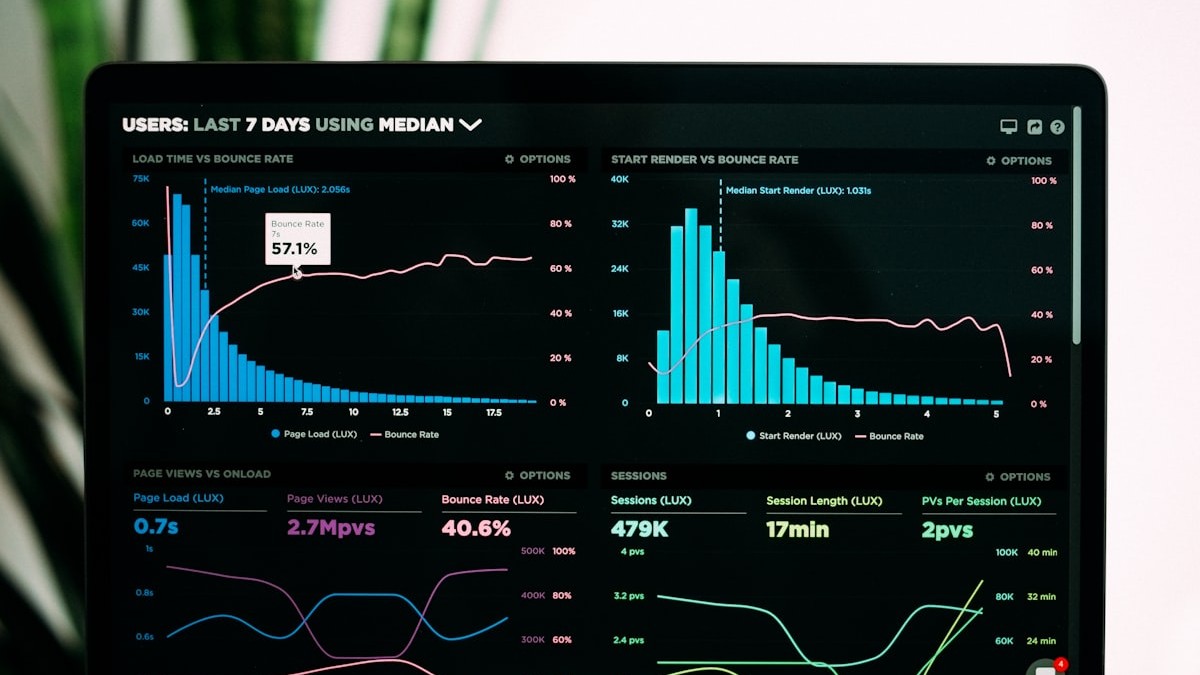Multimodal AI Assistants: The Future of Intelligent Interaction
Artificial intelligence is rapidly evolving, and one of the most exciting advancements is the emergence of multimodal AI assistants. These sophisticated systems go beyond traditional text-based interfaces to understand and respond to a variety of inputs, including images, audio, video, and sensor data. This article will delve into the world of multimodal AI assistants, exploring their practical applications, current trends, and the transformative impact they are poised to have on various industries.
1. Understanding Multimodal AI: Beyond Text

Multimodal AI Assistants: The Future of Intelligent Interaction - Image 1
What is Multimodal AI?
Multimodal AI refers to artificial intelligence models that can process and integrate information from multiple modalities or types of data. This contrasts with unimodal AI, which focuses on a single type of input, such as text or images alone. By combining different modalities, AI systems can gain a more comprehensive understanding of the world and provide more accurate and nuanced responses.
The Power of Combining Modalities
Imagine an AI assistant that can not only transcribe your voice commands but also analyze your facial expressions and the surrounding environment to better understand your intent. This is the power of multimodal AI. By integrating information from different sources, these systems can overcome the limitations of unimodal approaches and provide a richer, more intuitive user experience. For example, an AI assistant might use both text and image recognition to identify an object in a photo you send and then provide relevant information about it.
Key Modalities Used in AI Assistants
- Text: Natural Language Processing (NLP) remains a core component, enabling understanding and generation of human language.
- Speech: Automatic Speech Recognition (ASR) allows assistants to transcribe spoken commands and provide voice-based responses using Text-to-Speech (TTS) technology.
- Image: Computer vision enables assistants to analyze images, identify objects, and understand visual scenes.
- Video: Video analysis allows assistants to understand actions, events, and context within video streams.
- Sensor Data: Integration with sensors (e.g., location, temperature, motion) provides real-world context for more personalized and relevant interactions.
2. Practical Applications Across Industries
Multimodal AI assistants are already making waves across various sectors, demonstrating their versatility and potential to revolutionize workflows and user experiences.
Healthcare
- Diagnosis and Treatment: Analyzing medical images (X-rays, MRIs) alongside patient history and symptoms for more accurate diagnoses. An external link to a reputable medical AI journal would be beneficial here (e.g., The Lancet Digital Health).
- Patient Monitoring: Using video and audio analysis to monitor patients' vital signs and detect anomalies.
- Personalized Care: Providing tailored recommendations based on individual health data and lifestyle factors.
Retail
- Enhanced Customer Service: AI-powered chatbots that can understand customer inquiries via text, voice, or image (e.g., identifying a product from a photo). Internal link to a hypothetical case study on AI in Retail would be useful here.
- Personalized Shopping Experiences: Recommending products based on browsing history, purchase patterns, and visual preferences.
- Inventory Management: Using computer vision to track inventory levels and identify potential stockouts.
Education
- Personalized Learning: Tailoring educational content to individual student needs based on learning styles and performance data.
- Interactive Tutoring: AI tutors that can provide personalized feedback and guidance through text, voice, and visual aids.
- Accessibility: Providing real-time transcription and translation services for students with disabilities.
Manufacturing
- Quality Control: Using computer vision to inspect products for defects and ensure quality standards are met.
- Predictive Maintenance: Analyzing sensor data to predict equipment failures and schedule maintenance proactively.
- Robotics and Automation: Enhancing the capabilities of robots through multimodal perception and decision-making.
3. Current Trends Shaping Multimodal AI Assistants
Several key trends are driving the development and adoption of multimodal AI assistants:
Rise of Large Language Models (LLMs)
LLMs like GPT-4 and Gemini are providing a powerful foundation for multimodal AI by enabling more sophisticated natural language understanding and generation. These models can process text, images, and audio, making them ideal for building versatile AI assistants.
Advancements in Computer Vision
Improved computer vision algorithms are enabling AI assistants to analyze images and videos with greater accuracy and efficiency. This is crucial for applications like object recognition, facial recognition, and scene understanding.
Edge Computing
Edge computing is bringing AI processing closer to the data source, enabling faster response times and reduced latency. This is particularly important for applications that require real-time analysis, such as autonomous vehicles and robotics.
Focus on Explainability and Trust
As AI systems become more complex, there is growing emphasis on explainability and transparency. Users need to understand how AI assistants make decisions to trust them and ensure they are used ethically and responsibly. An external link to a resource on Explainable AI (XAI) would enhance this section (e.g., DARPA's XAI Program).
4. Building a Multimodal AI Assistant: Key Considerations
Developing a successful multimodal AI assistant requires careful planning and execution. Here are some key considerations:
Data Collection and Preparation
Gathering and preparing high-quality data is crucial for training effective AI models. This includes collecting diverse datasets that represent the different modalities the assistant will need to process.
Model Selection and Training
Choosing the right AI models and training them effectively is essential for achieving optimal performance. This may involve using pre-trained models, fine-tuning existing models, or developing custom models from scratch.
Integration and Deployment
Integrating the AI assistant with existing systems and deploying it in a user-friendly manner is critical for adoption. This may involve developing APIs, SDKs, and user interfaces that make it easy for users to interact with the assistant.
Evaluation and Monitoring
Regularly evaluating and monitoring the performance of the AI assistant is essential for identifying areas for improvement and ensuring it continues to meet user needs. This includes tracking metrics like accuracy, response time, and user satisfaction.
5. The Role of Natural Language Processing (NLP)
Natural Language Processing (NLP) is a cornerstone of multimodal AI assistants. It enables these systems to understand, interpret, and generate human language, making them capable of engaging in natural and intuitive conversations.
NLP Techniques for Multimodal AI
- Sentiment Analysis: Understanding the emotional tone of user input.
- Named Entity Recognition (NER): Identifying and classifying named entities (e.g., people, organizations, locations).
- Question Answering: Answering user questions based on text and other modalities.
- Text Summarization: Generating concise summaries of lengthy text documents.
Challenges in NLP for Multimodal Context
Integrating NLP with other modalities presents unique challenges. For example, the meaning of a sentence can change depending on the accompanying image or video. AI assistants need to be able to handle these complexities to provide accurate and relevant responses.
6. Ethical Considerations and Responsible AI Development
The development and deployment of multimodal AI assistants raise important ethical considerations.
Bias and Fairness
AI models can perpetuate and amplify biases present in the data they are trained on. It is crucial to address bias in training data and ensure that AI assistants are fair and equitable for all users.
Privacy and Security
Protecting user privacy and security is paramount. AI assistants should be designed to collect and process data responsibly and securely.
Transparency and Accountability
It is important to be transparent about how AI assistants work and who is responsible for their actions. This helps build trust and ensures that AI systems are used ethically and responsibly.
7. The Future of Multimodal AI Assistants: What's Next?
The future of multimodal AI assistants is bright, with several exciting developments on the horizon.
Enhanced Personalization
AI assistants will become increasingly personalized, adapting to individual user preferences and needs based on a deeper understanding of their context and behavior.
Seamless Integration with IoT Devices
AI assistants will seamlessly integrate with the Internet of Things (IoT), enabling users to control and monitor their environment through voice, gesture, and other modalities.
Advanced Reasoning and Problem-Solving
AI assistants will be capable of more advanced reasoning and problem-solving, helping users tackle complex tasks and make better decisions.
Integration with the Metaverse
Multimodal AI assistants will play a key role in the metaverse, providing users with immersive and interactive experiences.
8. Getting Started with Multimodal AI
For professionals and enthusiasts eager to explore multimodal AI assistants, several resources are available.
Available Tools and Platforms
- Google AI Platform: Offers tools for building and deploying AI models.
- Amazon SageMaker: Provides a comprehensive platform for machine learning.
- Microsoft Azure AI: Offers a range of AI services, including computer vision and NLP.
- OpenAI API: Access to powerful AI models, including GPT-4.
Learning Resources
- Coursera and edX: Offer online courses on AI and machine learning.
- Kaggle: A platform for data science competitions and collaboration.
- arXiv: A repository for research papers on AI and related topics.
Building a Simple Multimodal Application
Start with a simple project that combines text and image analysis. For example, you could build an AI assistant that can identify objects in an image and provide relevant information about them. This will give you hands-on experience with the key concepts and techniques involved in multimodal AI.
Conclusion
Multimodal AI assistants represent a significant leap forward in artificial intelligence, offering more intuitive, personalized, and powerful interactions. By combining different modalities like text, speech, images, and video, these systems are transforming industries and reshaping the way we interact with technology. As technology continues to evolve, we can expect even more innovative applications of multimodal AI to emerge. Are you ready to explore the possibilities? Start experimenting today and discover how multimodal AI assistants can revolutionize your workflows and enhance your user experiences.
FAQ
Q1: What are the key benefits of using multimodal AI assistants?
Multimodal AI assistants offer improved accuracy, more natural interactions, enhanced personalization, and the ability to handle complex tasks that require understanding multiple types of data.
Q2: What are some of the challenges in developing multimodal AI assistants?
Challenges include collecting and preparing diverse datasets, integrating different modalities, addressing bias and fairness, and ensuring privacy and security.
Q3: How are large language models (LLMs) impacting the development of multimodal AI?
LLMs provide a powerful foundation for multimodal AI by enabling more sophisticated natural language understanding and generation, making it easier to process and integrate different modalities.
Q4: What industries are benefiting the most from multimodal AI assistants?
Healthcare, retail, education, and manufacturing are among the industries that are seeing significant benefits from multimodal AI assistants.
Q5: How can I get started with learning about and experimenting with multimodal AI?
You can start by exploring online courses, using AI platforms like Google AI Platform and Amazon SageMaker, and experimenting with simple projects that combine text and image analysis.



